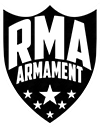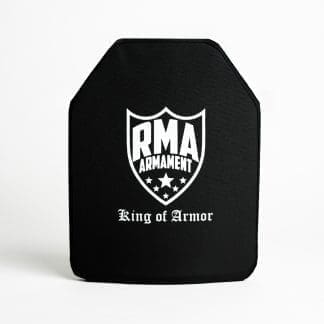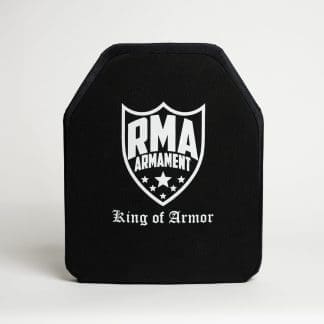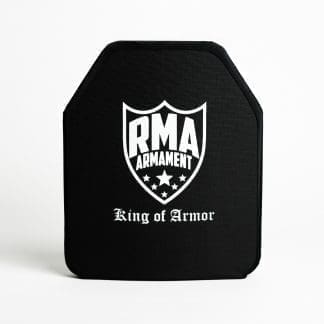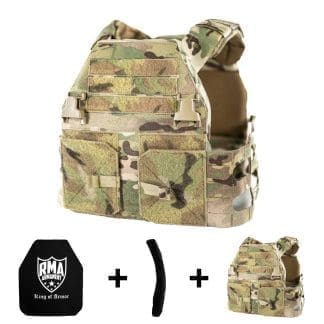Showing all 5 results
-
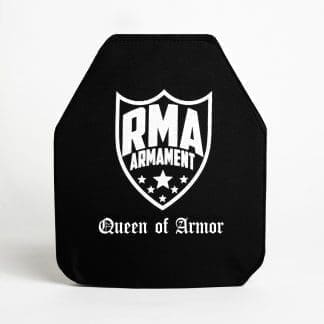
Level 3 Women’s Body Armor
No reviews yetPrice range: $299.99 through $349.99 Select options This product has multiple variants. The options may be chosen on the product page Weight: 2.4 lbs. Thickness: 1" -

Level III Multi-Curve M-L (Model #1062-1063 Gen2) NIJ .07 RF1 Tested
$349.99 Select options This product has multiple variants. The options may be chosen on the product page Size Med Weight: 3.1 lbs. Thickness: 1" -

Level III Body Armor (Model #1078) NIJ .06 Certified
$275.00 Read more Weight: 3.3 lbs. Thickness: 1.25" -

Level III Body Armor Plate (Model #1088) NIJ .06 Certified
$339.00 Read more Weight: 3.0 lbs. Thickness: 1" -

Level 3 Women’s Body Armor Kit
No reviews yetPrice range: $889.97 through $899.97 Select options This product has multiple variants. The options may be chosen on the product page
Showing all 5 results
A New Generation of Level 3 Body Armor
Until recently, Level 3 plates weren’t very practical. While Level IV ceramic plates protect against more types of cartridges, including armor piercing rounds, Level 3 body armor is required to protect against six strikes from steel jacketed 7.62X51 NATO. Thus, many Level III body armor plates were slightly lighter versions of Level IV plates. Comprised of heavier ceramics or AR500 steel, these heavy plates didn’t make sense. Inventing UHMWPE fabric changed everything. Thereafter, Level 3 armor certification became possible to achieve with no ceramics or hard materials whatsoever.
Accordingly, we press ultra-high molecular weight polyethylene (UHMWPE) in a wearable format. It defeats six rounds of NATO M80 Steel, but additionally a variety of other cartridges that aren’t typically included among Level 3 body armor tests. The best part? Modern Level 3 plates from RMA are so unbelievably lightweight that they actually float in water.
Level 3 Use Case Scenarios
If your area of operations includes water, or you’re looking for the ultimate in lightweight protection. RMA’s NIJ-Certified Level III 1078, 1088, and 1060 series plates should be your first choice.
Law enforcement users appreciate the ability to up-armor their standard soft armor vest with minimal weight. Maritime users take advantage of UHMWPE’s buoyancy to protect the wearer from sinking like an anchor during waterborne operations.
What Does Level 3 Body Armor Stop?
What makes polyethylene Level III armor so impressive? It defeats an array of powerful rifle rounds such as the steel jacketed M80 NATO or 5.56 M193. Lightweight level III body armor can defeat common 5.56 FMJ or 7.62×39 MSC rounds. One major thing separates lightweight polyethylene Level 3 armor from AR500 level 3 armor. Lightweight polyethylene plates have the ability to stop the M193 round. Whereas, M193 will fully penetrate AR500 steel armor. A body armor plate defeats six rounds of steel jacketed M80 NATO to officially become NIJ .06 Certified at level 3. RMA boasts three lightweight Level 3 body armor plates on the NIJ’s compliant product list. The Model 1078, Model 1088 and multi-curve models 1061-1064.
What are Level III Body Armor Plates Made Out Of?
The main component of all RMA’s level 3 body armor is ultra high molecular weight polyethylene – or UHMWPE.
RMA builds each of its NIJ .06 certified level 3 armor plates with a different material. However, each body armor plate is built by first cutting out the various UHMWPE material on the cutting table. Then, RMA’s two hydraulic presses finish them into ballistic garments. This gives them their rigid ballistic capability.
Why Are Level 3 Plates More Expensive than Some of Your Level IV Body Armor Plates?
Lightweight armor materials are more expensive to purchase and process. If you compare RMA’s Level 4 model 1155 body armor plate to the Level 3 model 1078 body armor plate, there is a five pound weight difference. The heavier materials that make up the 1155 armor plate are much less expensive than the UHMWPE that makes up about 98% of a level 3 plate. American made UHMWPE is an expensive material. Thus, level 3 plates are more expensive than cost effective level 4 armor plates.
What are the Main Differences Between Polyethylene Level III Body Armor & Steel Level III Body Armor?
The most noticeable difference is weight. Polyethylene Level 3 armor plates typically weigh between 3 and 3.5 pounds, while steel level III body armor plates weigh anywhere from 7 to 9+ pounds.
Both polyethylene and steel plates defeat the standard steel jacketed M80 NATO rounds. High velocity threats like the M193 are easily defeated by lightweight polyethylene armor plates. However, M193 will NOT typically be defeated by AR500 steel armor. Steel fails to defeat the most common rifle round in the US. Thus, the upcoming 0101.07 NIJ Certification Standard lists the M193 as an essential Level 3 (or RF1) threat and will put an end to steel being sold as body armor.
The final difference between lightweight level 3 armor and steel level III body armor is spalling. A lightweight, polyethylene level 3 plate produces no spalling at all. These lightweight plates will eat up all of the bullet and its fragments. Polyethylene leaves behind no dangerous jacket spall. Steel armor will splinter the round apart and send jacket shrapnel flying. Shrapnel ricochets off the plate in many directions and also may potentially cause lethal damage to the wearer. Many steel plates have a polyurea spray lining is to help encapsulate the steel and bullet fragments.
What are the most comfortable Level 3 plates?
The most comfortable armor plate in many wearers opinion is the Model 1061-1064 multi-curve Level III body armor plate. The lightweight, multi-curve shape fits best to the users body while weighing as little as 3.07 lbs.
What Cut of Level 3 Body Armor Should I Get?
Level 3 plates have different cuts that cater to different scenarios. Traditionally, the military utilizes an ESAPI cut. ESAPI stands for Enhanced Small Arms Protective Insert and provides the most coverage.
The SAPI cut provides the most protective coverage, but does add a small amount of weight.
Swimmer’s cut features tighter angular cuts than the shooters cut, and often features rounded bottom corners to aid mobility of the legs. RMA currently only produces its Level 4 model 1155 plates in a swimmer’s cut variation.
What Plate Carrier Should I Use with Level 3 Plates?
When choosing a plate carrier for use with Level 3 armor plates, it is important to consider weight, attachment points, and material. These all play a role in the fit and functionality of each armor system.
0331 Tactical builds the Tailwind Plate Carrier with speed and flexibility in mind. Designed for rapid expansion and up-armoring, the lightweight Tailwind Plate Carrier is the ideal companion for operators who value minimal bulk & weight in their plate carrier setup.
Can an AR-15 Penetrate a Level 3 Ballistic Plate?
As with all body armor, a determining factor of ballistic capability starts with velocity and barrel length.
All of RMA’s polyethylene Level III plates defeat common 5.56 or .223 FMJ. They also defeat 55 grain M193. However, they will not defeat the M855 green tip or M855A1. If you’re looking to stop those rounds, RMA’s Level 3+ body armor line will do the job, as well as any of our Level 4 body armor plates.
Can an AK-47 Penetrate Level 3 Armor?
Simply put? No. Each of our polyethylene Level 3 plates defeat the most common AK-47 rounds on the market with ease, such as the 7.62×39 FMJ and 7.62×39 MSC, which boasts a mild steel core. However, our III+, RF2, or Level IV plates with ceramic strike faces are required to defeat 7.62X39 API-BZ, which is exceedingly rare in the United States and relegated to war zones.
While some companies say their armor is a Level III+ plate because it defeats a 7.62×39 MSC or 5.56 FMJ/M193, – make no mistake – Level III polyethylene plates can easily defeat that round by design. The 7.62X51 NATO M80 Steel test is a worst-case-scenario test that covers lesser FMJ threats. If they don’t, you should question the quality of the manufacturer’s armor.
